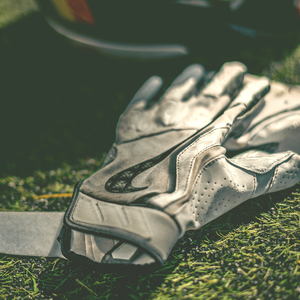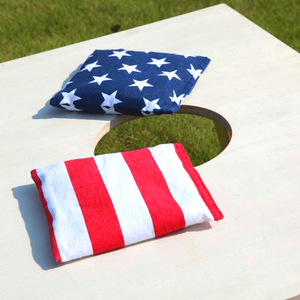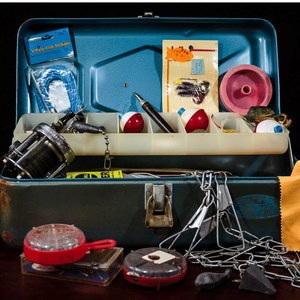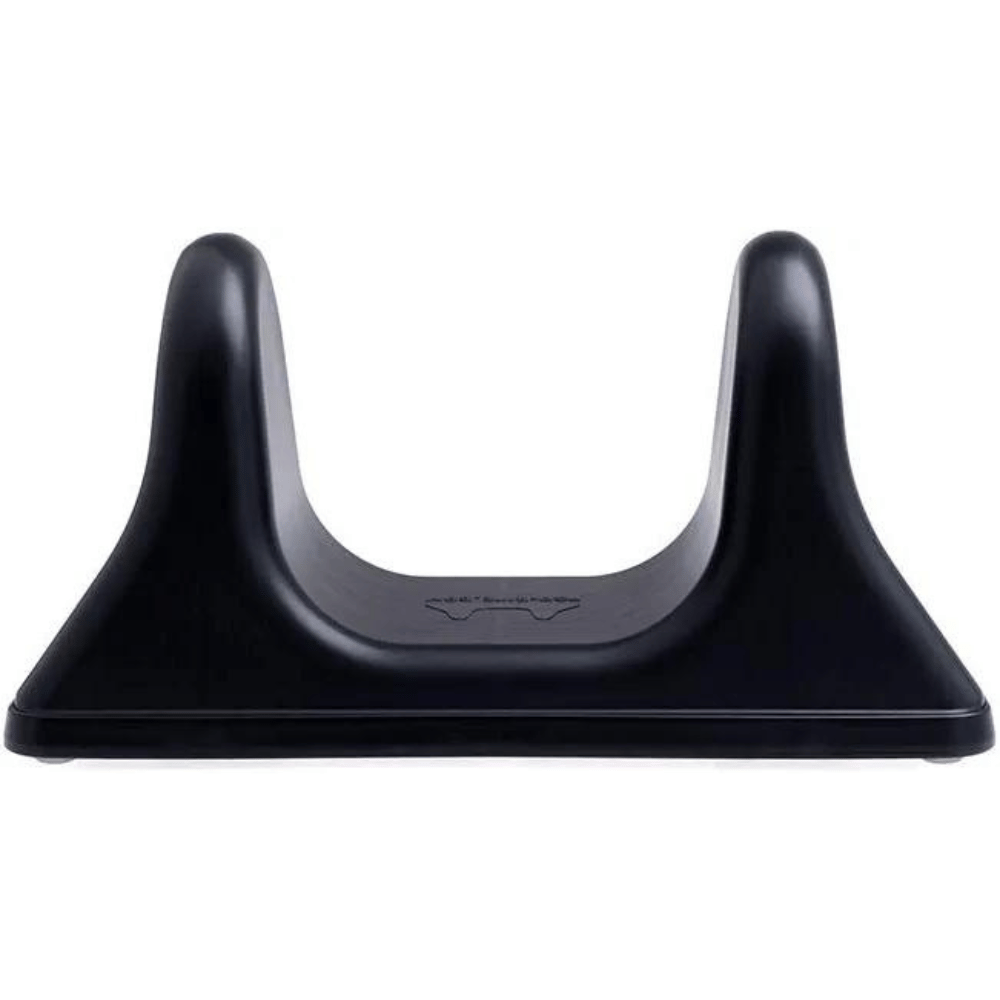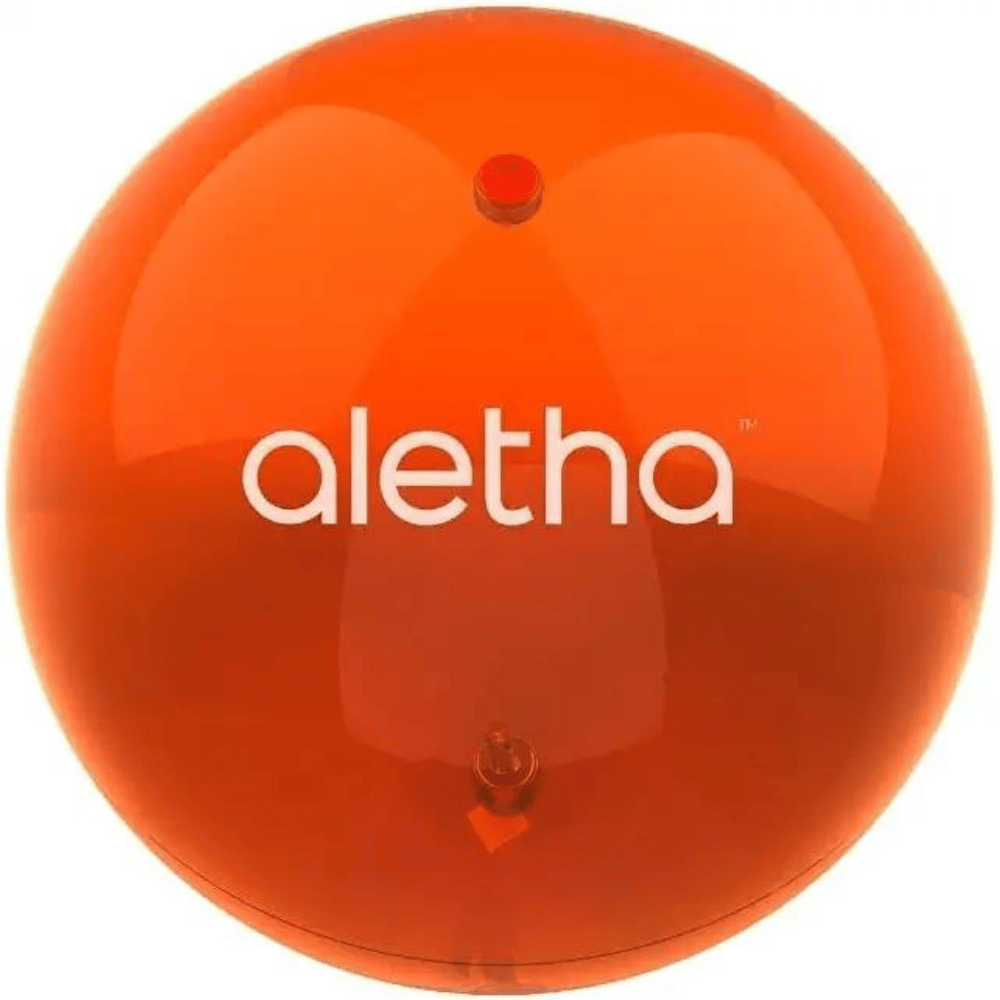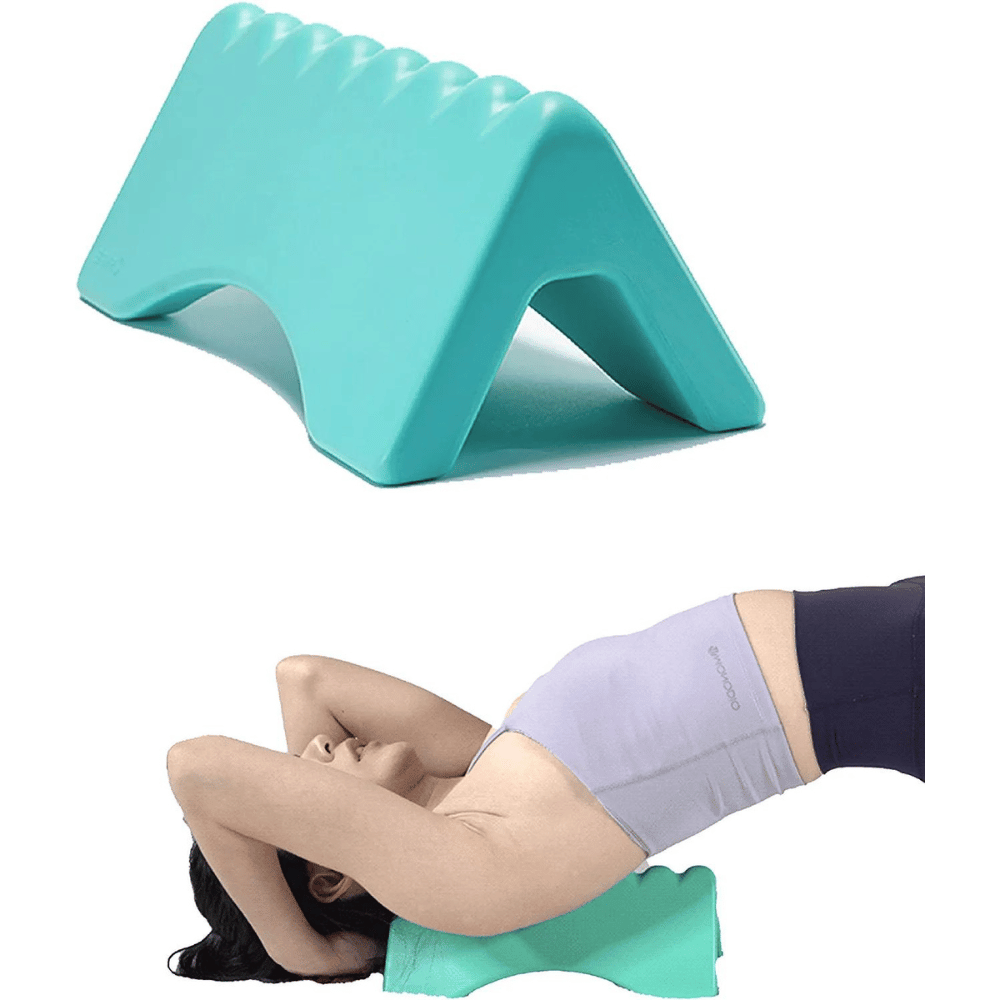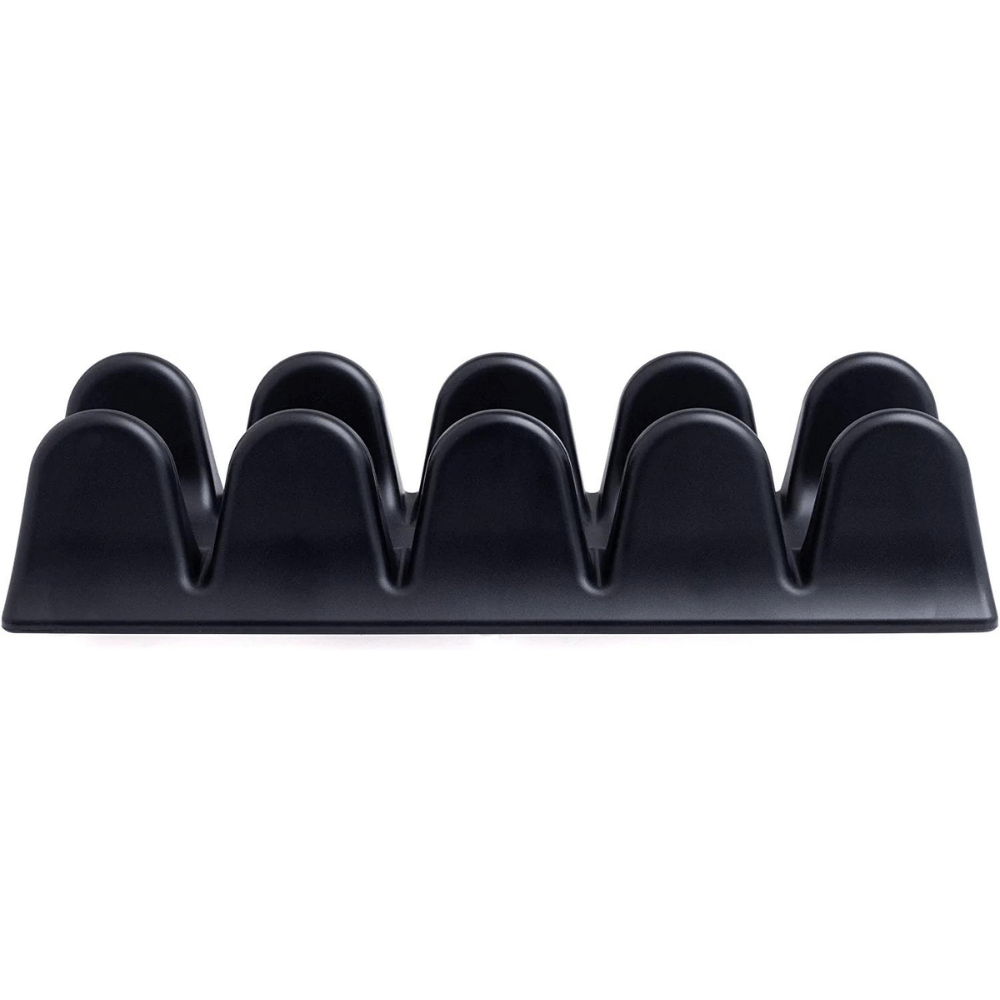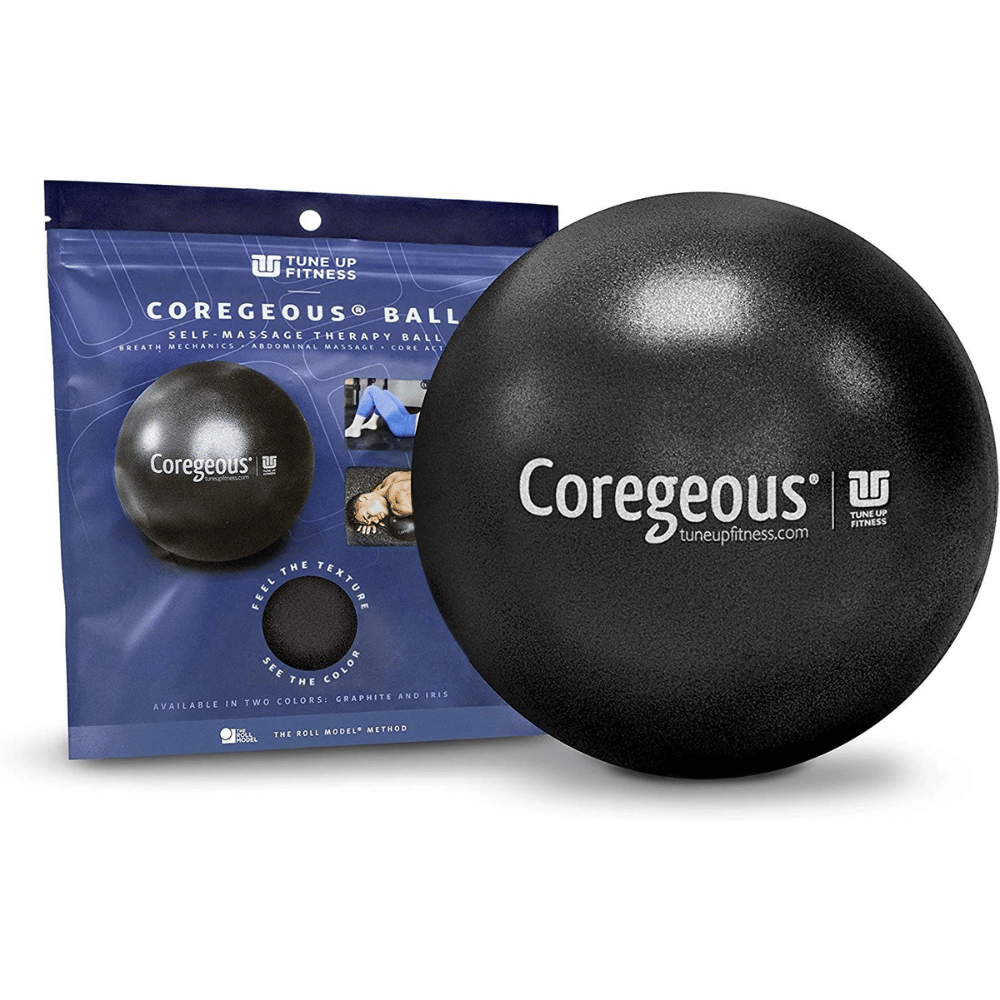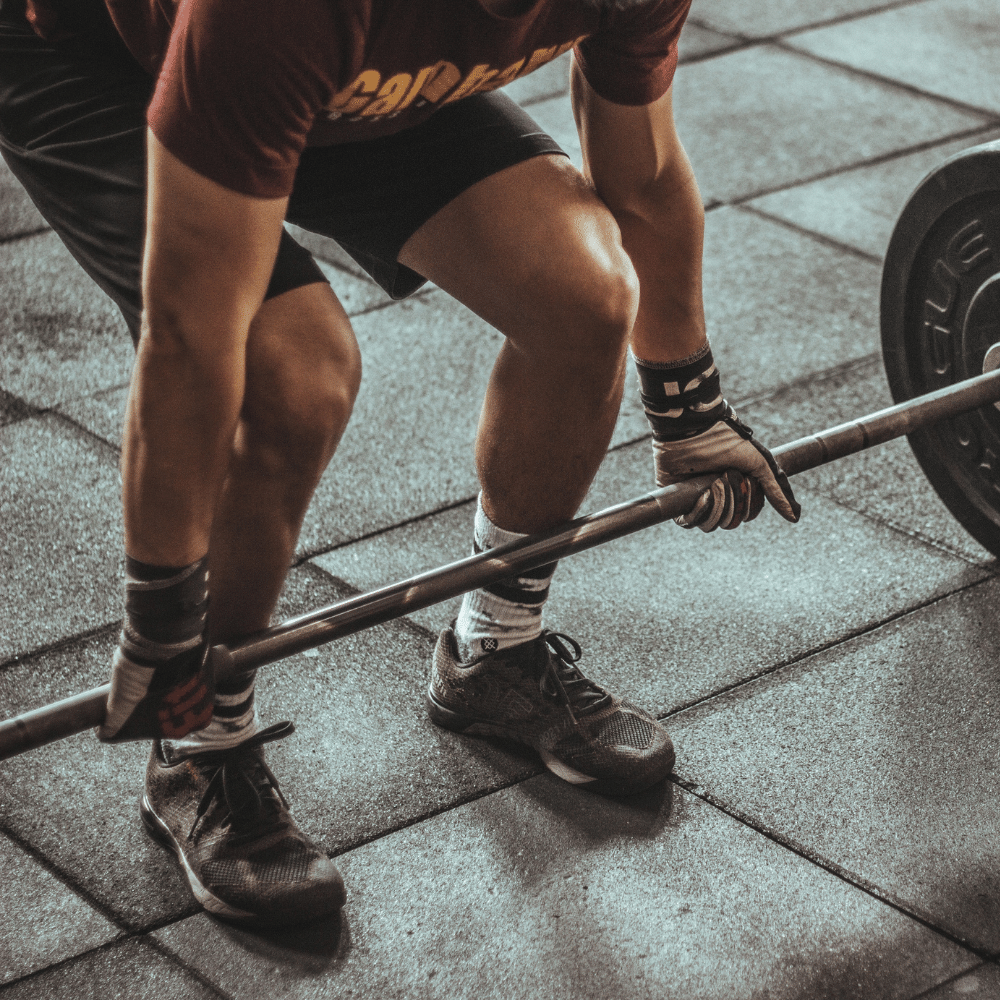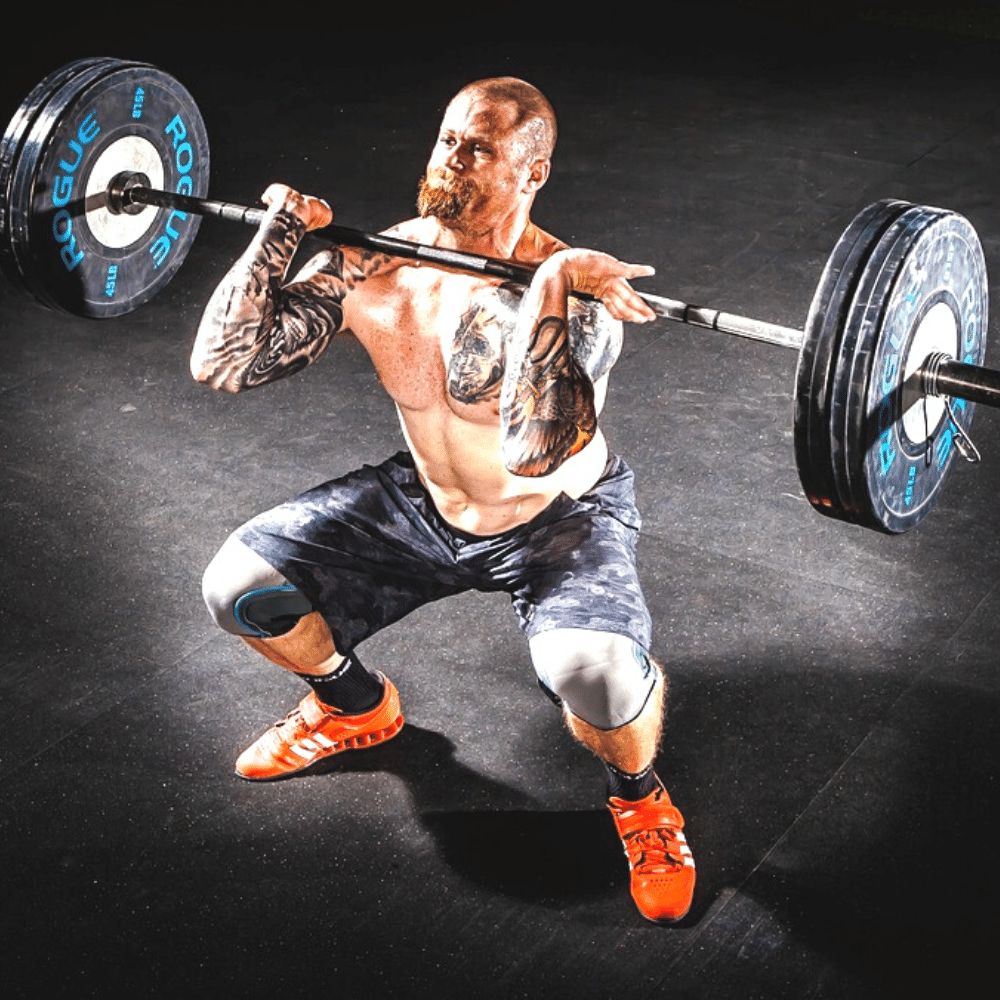Table of Contents
- Understanding the Psoas Muscle and Why Release Tools are Essential
- Benefits of Using Psoas Release Tools for Improved Flexibility and Posture
- (Our Recommendations) Top 6 Psoas Release Tools
- How to Use Psoas Release Tools Safely and Effectively for Optimal Results
- Psoas Release Tool FAQs
Understanding the Psoas Muscle and Why Release Tools are Essential
The psoas muscle, also known as the hip flexor, plays a crucial role in our body's movement and stability. Located deep within the abdomen, this muscle connects the spine to the femur and is responsible for flexing the hip joint. However, due to factors such as prolonged sitting or intense physical activity, the psoas muscle can become tight and lead to discomfort or even pain.
To address this issue, many individuals turn to psoas release tools. These tools are specifically designed to target and release tension in the psoas muscle. By using these tools correctly and regularly, individuals can experience relief from hip flexor tightness and associated discomfort.
Psoas release tools come in various forms, including massage balls, foam rollers, or specialized devices that specifically target the psoas muscle area. These tools work by applying pressure to trigger points within the muscle and promoting relaxation and lengthening of the tissue.
Regular use of psoas release tools can have numerous benefits. It helps alleviate hip flexor tightness, improve flexibility and range of motion in the hips, reduce lower back pain caused by a tight psoas muscle, enhance posture alignment, and even improve athletic performance.
It is important to note that while using these release tools can provide temporary relief from symptoms associated with a tight psoas muscle, it is also essential to address any underlying issues contributing to its tightness. Consulting with a healthcare professional or a qualified therapist who specializes in muscular imbalances can help identify any potential causes or additional treatment options for long-term relief.
Whether you're an athlete looking to optimize your performance or someone seeking relief from hip flexor tightness, understanding how the psoas muscle works and utilizing appropriate release tools can be instrumental in maintaining optimal musculoskeletal health.
Benefits of Using Psoas Release Tools for Improved Flexibility and Posture
Using psoas release tools can offer numerous benefits for individuals looking to improve their flexibility and posture. These tools specifically target the psoas muscle, also known as the hip flexor, which plays a crucial role in maintaining proper alignment and movement in the body.
One popular psoas release tool is the Pso-Rite, designed to provide targeted pressure and release tension in the psoas muscle. This tool allows users to effectively massage and stretch their hip flexors, helping to alleviate tightness and discomfort.
Another commonly used tool is the Pso-Tune-Up Balls, which are small balls that can be placed under specific areas of the body to apply gentle pressure on trigger points. By using these balls on the psoas muscle, individuals can release tension and improve overall flexibility.
The benefits of using these psoas release tools include improved posture, increased range of motion in the hips, reduced lower back pain, enhanced athletic performance, and better overall body alignment. Regular use of these tools can help prevent imbalances caused by prolonged sitting or repetitive movements.
It's important to note that while psoas release tools can be highly effective in promoting flexibility and posture improvement, it's always recommended to consult with a healthcare professional or physical therapist before incorporating them into your routine. They can provide guidance on proper usage techniques and ensure that these tools are suitable for your individual needs.
Top 6 Psoas Release Tools
- Top Shelf - PSO-RITE Psoas Muscle Release and Deep Tissue Massage Tool
- Next Best - Aletha - Hip Flexor Release Ball | Massage Ball
- Editor’s Choice - SNPE Wave Eiffel ABS - Deep Tissue Massage Chiropractic Psoas Release Tool
- Consumer Favorite - PSO-Spine Back Massage Tool and Deep Tissue Massage Tool
- Best Bang For Your Buck - Tune Up Fitness – Coregeous Ball | Psoas Release
- Splurge Worthy - Thrival - Fully Adjustable Psoas, Glute, Back and Neck Deep Tissue Massage Release Tool
TOP SHELF
Top Shelf Features
The PSO-Rite is a self-care mobility massage tool that is designed to help release tension in the psoas muscles, especially hip pain. These muscles are important for regulating the fight or flight response, supporting the digestive system, regulating breathing, and aiding in circulation.
The PSO-Rite is shaped like a therapist's hand and is hard enough to provide deep tissue massage, making it effective for relieving tightness in a variety of muscles throughout the body, including the hamstrings, thighs, calves, glutes, lower and upper back, triceps, biceps, and chest.
It is a convenient tool that can be used anywhere, whether at the gym, during sports training, in the office, or at home.
Top Shelf Details
It is made of ABS plastic and weighs 0.52 kilograms. It is recommended to use the PSO-Rite for 5-60 seconds at a time and to consult a doctor before using it.
The dimensions of the tool are 10.7 inches in length, 5 inches in width, 5.3 inches in height, and 6.3 inches peak to peak. It weighs 1.15 pounds and is made in the USA.
Next Best
Top Shelf Features
The Aletha Hip Flexor Release Ball is a compact, inflatable massage tool designed to provide relief from backaches and reduce muscle tension, inflammation, and strain on soft tissue, muscle knots, and trigger points.
It is perfect for use at home, at the gym, or on the go, and its flexible design makes it sturdy and effective for providing therapeutic massage and improving circulation in tight areas. Recommended by physical therapists, this fitness ball is made to improve the function of the body, increase mobility and range of motion, and prevent sore muscles.
It is durable and easy to use, simply lean or lay on the ball and use your body weight and gravity to relieve tension. To get the most out of this ball, it is recommended to use it for just 2 minutes a day.
Top Shelf Details
To use the Aletha Hip Flexor Release Ball, you can lie on your back with your knees bent and place the ball under one hip, resting your weight on it. From here, you can gently rock your hips back and forth, or rotate them in circles to massage the muscle and help release tension. You can also stand up and place the ball against a wall, pressing your hip into it to apply pressure to the muscle.
The ball is made of plastic and weighs about 1 ounce, making it easy to carry and use on the go. It is a useful tool for anyone looking to improve their flexibility, relieve muscle tension, and reduce pain in the hip and upper thigh area. It may be particularly helpful for athletes and people who engage in activities that require a lot of hip movement, such as running or dancing.
Editor’s Choice
Top Shelf Features
The SNPE Wave Eiffel ABS Chiropractic Deep Tissue Massage Tool is a versatile physical therapy tool that can be used to help improve posture, relieve lower back pain, and provide massage to tightened muscles.
Its unique design allows users to apply pressure to specific areas of the body, such as the lower back, waist, and shoulders, to help correct posture and relieve pain.
The tool can also be used as an acupressure tool to help relieve lower back and neck pain, and as a massager for tightened muscles around the back, legs, and shoulders.
Top Shelf Details
The SNPE Wave Eiffel ABS Chiropractic Psoas Release Tool is made of Acrylonitrile Butadiene Styrene (ABS), a type of plastic that is known for its toughness, impact resistance, and durability. It is a lightweight and easy-to-use tool that can be used for posture correction, lower back pain relief, and massage.
The unique wave shape of the tool allows users to apply pressure to specific areas of the body, such as the lower back, waist, and shoulders, to help correct posture and relieve pain.
It can also be used as an acupressure tool to help relieve lower back and neck pain, and as a massager for tightened muscles around the back, legs, and shoulders.
Consumer Favorite
Top Shelf Features
The PSO-Spine Muscle Release Tool is an advanced massage tool designed to help relieve tight muscles on both sides of the spine. It is a full-back massager and self-massage tool. The tool has a simple and strong design, with a 5-peak structure that allows users to apply pressure to different parts of the spine and hips.
The patented design of the tool mimics the fingers, knuckles, hand, and elbow, making it feel like having a massage therapist in your hands.
It is a versatile and precise tool that can be used to target deep, specific, and difficult-to-access muscles in the back, helping to keep spinal muscles healthy and nerves functioning properly.
Top Shelf Details
The PSO-Spine Muscle Release Tool is a versatile tool designed to help you release muscle tension and promote relaxation in your whole body. It measures 11.5 inches in length, 4.88 inches in width, and 2.5 inches in height, with a peak-to-peak measurement of 3 inches.
It weighs just 0.79 pounds or 12.69 ounces, making it easy to carry with you wherever you go. The PSO-Rite is made in the USA. Before using this product, it is important to consult with your doctor to ensure that it is appropriate for your needs. It is made from durable ABS plastic.
Best Bang For Your Buck
Top Shelf Features
The Tune Up Fitness Psoas Release is a handy tool designed to help you feel more at ease in your body. It works excellently as an abdominal and psoas stretch ball, providing lower back pain relief without having to twist or engage the back muscles. It also helps with constipation relief and aids in eliminating waste.
The Courageous Ball is perfect for post-workout recovery and deep relaxation, setting the stage for a healthy good night's sleep. It is inflatable and lightweight, making it easy to pack into a gym bag, backpack, or purse for on-demand pain and stress relief whenever you need it most.
The Tune Up Fitness Psoas Release is widely used by teachers and practitioners worldwide and is a key therapy ball in Jill Miller's Roll Model Method and Yoga Tune Up fitness formats. It is used by over 500 certified teachers in yoga studios, gyms, physical therapy, and wellness centers across the globe.
Top Shelf Details
The Tune Up Fitness Psoas Release is a massage therapy ball designed for core release. It is approximately 23 1/2 inches in circumference and 7 1/2 inches in diameter, making it the perfect size for activating your core and massaging your abs. The inflatable, air-filled sponge ball provides the gentle pressure of a broad, flat hand, making it an ideal tool for psoas release.
The Courageous Ball is made from PVC and does contain a small number of phthalates, a softener, in a non-detectable trace amount less than the allowable 0.1 percent. It has passed all tests from the manufacturer by CPSIA Section 106 and 108, as well as California Proposition 65. The ball weighs just 5 ounces, making it easy to carry with you wherever you go.
Splurge-Worthy
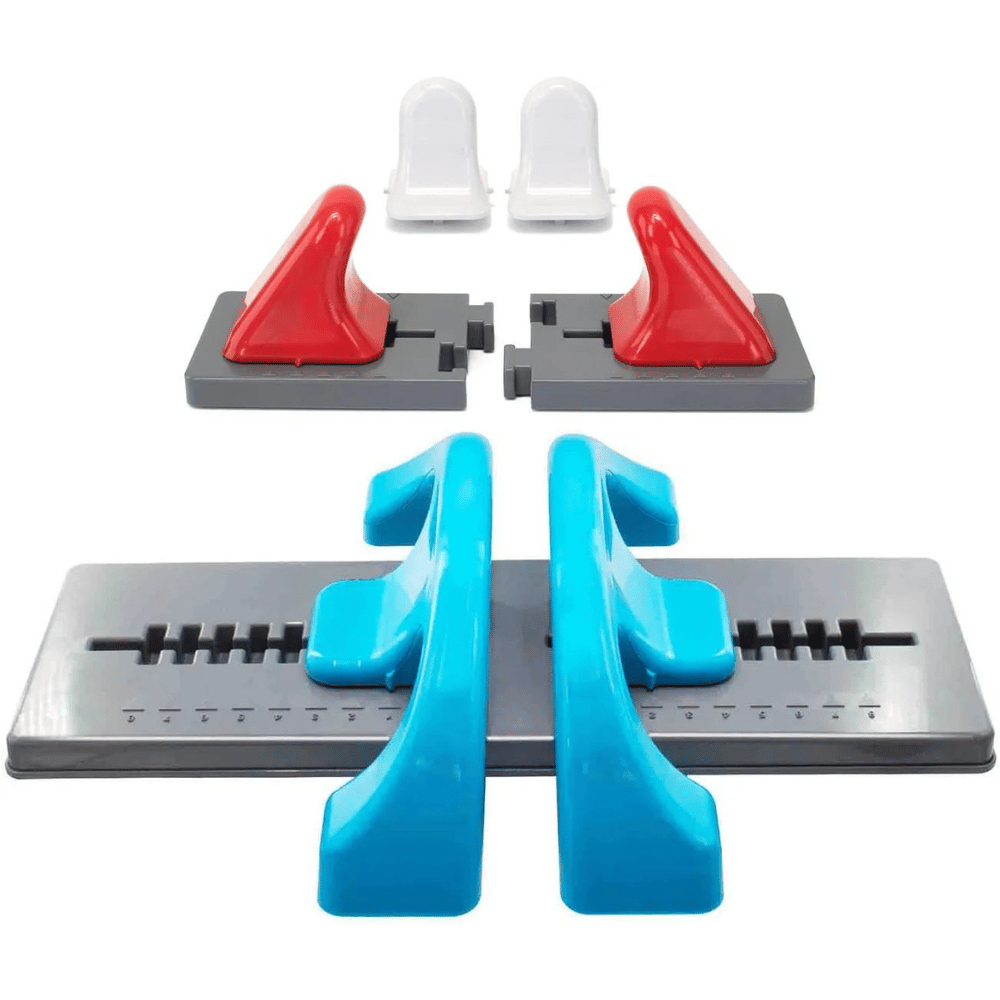
Thrival - Fully Adjustable Psoas, Glute, Back and Neck Deep Tissue Massage Release Tool
Top Shelf Features
The Thrival Full Body Release is a best-in-class self-massager that can help you address nearly every muscle in your body. The tool comes in several configurations and is essential for unlocking your psoas, glutes, back, neck, and legs. It is fully adjustable, with each Roman Arch, Meat Grinder, or Bullseye attachment head locking into the release board and offering 8 different positions on each side of the board.
This allows you to customize the tool to your anatomy and the muscle group you are targeting. With the inclusion of all three attachment heads in the Plus configuration, you can release and stretch nearly any major muscle group or trigger point on your body.
The Thrival Full Body Release is a great alternative to bulky, dirty, and misshapen foam rollers, massagers, and hook tools, and is portable, lightweight, ergonomic, and easy to clean. It is sure to become your new favorite tool for unlocking hips, releasing tightness, and stretching your hip flexors.
Top Shelf Details
The Thrival Full Body Release features three attachment heads: Meat Grinder, Bullseye, and Roman Arch. Each attachment head has its unique features and adjustable range to accommodate different muscle groups and body types. When pointed inwards, the Meat Grinder attachment heads have an adjustable range of 2.25 to 13.5 inches peak to peak, while when turned outwards, the range expands to 7.5 to 18.5 inches peak to peak.
The Bullseye attachment heads are adjustable from 5 to 16 inches from peak to peak, and the Roman Arch attachment heads have an adjustable range of 2.25 to 13.5 inches from peak to peak. With these different attachment heads and adjustable ranges, you can customize the Thrival Full Body Release to your needs and target specific muscle groups with precision.
How to Use Psoas Release Tools Safely and Effectively for Optimal Results
To safely and effectively use psoas release tools for optimal results, it is important to understand the proper techniques and exercises for stretching and releasing the psoas muscle. The psoas muscle, also known as the hip flexor, plays a crucial role in our posture and movement. When this muscle becomes tight or restricted, it can lead to discomfort and limited range of motion.
One effective way to release the psoas muscle is through stretching exercises. These exercises focus on lengthening and relaxing the muscle fibers. One popular stretch is the kneeling lunge stretch, where you kneel on one knee while extending the other leg forward into a lunge position. This helps stretch both the hip flexors and quadriceps.
Another technique for releasing the psoas is self-massage. Using a foam roller or a massage ball, you can apply gentle pressure to specific points along the front of your hip area where the psoas muscle is located. This helps to release tension and promote relaxation in the muscle.
It's important to approach these techniques with caution and listen to your body's feedback. Start with gentle stretches or self-massage techniques before gradually increasing intensity or duration. If you experience any pain or discomfort during these exercises, it's advisable to consult with a healthcare professional.
Incorporating regular hip flexor stretches and psoas release techniques into your fitness routine can help improve flexibility, reduce tightness, alleviate lower back pain, and enhance overall mobility. Remember to always prioritize safety by using proper form, starting slowly, and seeking guidance from qualified professionals if needed.
TOP SHELF RECAP
- Top Shelf - PSO-RITE Psoas Muscle Release and Deep Tissue Massage Tool
- Next Best - Aletha - Hip Flexor Release Ball | Massage Ball
- Editor’s Choice - SNPE Wave Eiffel ABS - Deep Tissue Massage Chiropractic Psoas Release Tool
- Consumer Favorite - PSO-Spine Back Massage Tool and Deep Tissue Massage Tool
- Best Bang For Your Buck - Tune Up Fitness – Coregeous Ball | Psoas Release
- Splurge Worthy - Thrival - Fully Adjustable Psoas, Glute, Back and Neck Deep Tissue Massage Release Tool
Psoas Release Tool FAQs
Here are the most frequently asked questions about the best psoas release tools:
What is the fastest way to release the psoas?
Releasing the psoas can be a challenging process, but with a few simple steps, you can effectively relax your muscles and improve your mobility.
The best way to release the psoas muscle is by using one of the deep tissue massage tools mentioned above.
What does it feel like when the psoas releases?
When the psoas muscle releases, you may experience a sudden feeling of relief and release. This can manifest as a tingling sensation or a sense of lightness as your entire body relaxes and realigns itself.
When the psoas muscle becomes tight from prolonged sitting, it can cause discomfort or pain in the lower back, pelvis, and hips, including conditions like sciatica. Releasing this muscle helps restore mobility in the lower back area and alleviates stress throughout the body.
You know you have released these muscles when you feel a sense of openness around your hips, without any pain whatsoever, accompanied by improved posture resulting from alignment correction throughout your lower body. With proper weight distribution, starting from the feet up, balance can be restored throughout various areas such as the gluteal region. This leads to greater comfort during movement activities like running and jumping.
What problems can a tight psoas cause?
Having a tight psoas muscle can indeed be a significant issue. It can impact various aspects of our daily lives. Unfortunately, this problem is often overlooked.
The psoas muscle is one of the most vital muscles in your body. It extends from your lumbar spine to your femur bone, playing a crucial role in core stability, hip flexion, and extension. When this muscle becomes excessively tight or weak, it can result in a range of issues, including:
- Low Back Pain – A tight psoas muscle can cause lower back pain because it is directly connected to the spine. The increased tension in the muscle can result in misalignment of the spine, leading to chronic aches in the lower back area.
- Reduced Range Of Motion – Having a tight psoas muscle can limit the range of movement in the hip joint, which is responsible for hip flexion and extension. This can make certain motions, such as bending forward or twisting at the waist/spine, more difficult or painful than they should be.
- SI Joint Dysfunction – If your psoas muscle is excessively tightened, it can exert pressure on your sacroiliac joint, which plays a crucial role in connecting the movements of your hips and spine. This can lead to potential dysfunction if not addressed in a timely manner. If left unchecked, this issue can lead to further complications such as piriformis syndrome or sciatica.
Fortunately, there are ways you can address these issues. One effective approach is to incorporate stretching exercises specifically designed to improve flexibility in the targeted region. Additionally, incorporating strengthening exercises can further enhance the results. This helps strengthen not only the primary mover but also other auxiliary muscles connected to it, such as the glutes and quads, among others. This not only restores mobility but also helps gradually revive the original posture over time.
How long does it take to release the psoas?
Releasing your psoas, the muscle responsible for hip flexion and rotation, can be an effective method for reducing pain or tightness in the lower back, hips, and other areas of the body.
However, although it may appear to be a quick solution to relieve muscle tension, it is important to recognize that releasing your psoas requires dedicated time and effort.
The time it takes to release your psoas varies from person to person. It can range from one session to several sessions.
Can tight psoas cause anxiety?
Absolutely. The psoas muscle is a two-headed muscle that connects the lower spine to the femur. It plays an essential role in our core, aiding in posture and balance.
When we experience anxiety, fear, or other psychological issues, these emotions can cause us to tense up our muscles and tighten our core, including the psoas muscle. This muscular tension could exacerbate existing tightness in this area.
Tightness in your psoas can have an impact on your body's movement. If it is too tight, it can restrict movement in certain directions, leading to a limited range of motion. The relationship between physical posture and emotional states has been well established. For example, consider the power of "power poses." This reduced range of motion can actually lead to low self-esteem and decreased confidence, both of which are tied to increased levels of anxiety over time.
Other ways in which tightness in your psoas can lead to increased anxiety include:
- Difficult to switch from a stressful state to a state of relaxation.
- Poor flexibility for activities such as running or dancing.
- Experiencing increased pain or muscle soreness throughout the day can potentially trigger physical stress responses due to ongoing discomfort.
- Poor posture can lead to chest breathing, which in turn increases our vulnerability to nervous system imbalances such as sympathetic dominance.
- Sensory problems can arise when the tight psoas muscle puts pressure on peripheral nerves, leading to sensations such as tingling and numbness.
- Constant tension on abdominal muscles can lead to an inability to engage them properly, among other issues.
Yes, having a chronically tight psoas can indeed cause increased levels of anxiety if not addressed correctly.


